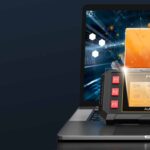As a content creator for carw.store and an automotive repair enthusiast, I recently explored the capabilities of the Launch X431 car scanner. My goal was to understand how to access and modify customizable vehicle settings, specifically on recent Toyota models – a 2024 4Runner and a 2023 RAV4. While the Launch Car Scanner proved functional, navigating its menus to program features like windows and seat alarms wasn’t as intuitive as I hoped. It appears that the menu structure varies depending on whether you initiate a scan using the ‘Toyota’ button or rely on the autodetect VIN feature. Here’s a breakdown of my experience to help you effectively use your Launch car scanner for vehicle customization.
Accessing Custom Settings Using the ‘Toyota’ Button on Your Launch Car Scanner
If you prefer manually selecting your vehicle’s brand, the ‘Toyota’ button path on the Launch X431 car scanner can lead you to the customization settings. Here’s how:
- Begin by connecting your Launch car scanner to your vehicle’s OBD port. Ensure the ignition is turned on, although the engine does not need to be running.
- From the scanner’s home screen, select “Diagnostics” to start the vehicle interrogation process.
- On the subsequent screen, instead of relying on auto-detection, press the ‘Toyota’ button. This manual selection method initiates a specific diagnostic pathway.
- Next, you’ll be prompted to select “16 pin DLC” on the following screen, confirming the standard OBDII connection.
- The Launch car scanner will then scan your vehicle’s systems, retrieve vehicle information, and display it. Press “OK” to proceed past this identification screen.
- You will now encounter a menu presenting several options: “Health Report,” “System Selection,” “Service Function,” “Customize Setting,” and “Vehicle Info.”
- To access programmable features, select “Customize Setting.” Navigating through the subsequent sub-menus within this section will allow you to modify various programmable functions, including settings for windows, interior lighting, and seat warming.
Utilizing the Autodetect VIN Feature for Customization with Your Launch Car Scanner
Alternatively, the Launch car scanner’s autodetect VIN function offers another route to access customization settings, albeit through a slightly different menu sequence:
- Start by plugging the launch car scanner into the OBD port and turning on the ignition, similar to the previous method.
- From the “Diagnostics” menu, allow the scanner to automatically detect your vehicle’s VIN. This initiates an auto-scan process.
- The scanner will initially jump to the “Health Report,” performing a comprehensive check for diagnostic trouble codes (DTCs) and potential issues. This step bypasses the menu presented in step #6 of the ‘Toyota’ button method.
- Once the health report scan is complete, navigate back out of the report using the back arrow, typically located in the upper left corner of the screen.
- This action will lead you to the DTC code screen, displaying all scanned modules, indicated by green checkmarks. Clicking on the ‘>’ symbol to the right of a green checkmark for a specific module reveals a new menu with options like “Read Fault Code,” “Clear fault memory,” “Read freeze frame,” “Read data stream,” “Actuation test,” and crucially, “special function.”
- The “special function” option, accessible from various modules, leads to another menu containing “initialization” and “customize setting.”
- Selecting “customize setting” from this menu will finally take you to the interface where you can program features related to windows, doors, warnings, and other customizable vehicle parameters.
While these are the methods I discovered to access customization menus on the Launch car scanner, there might be alternative pathways. Unfortunately, the user manual provides minimal guidance, and specific information or videos for late-model 4Runners were not readily available.
Interestingly, when I contacted the vendor about programming features, they incorrectly stated that these functionalities were not supported by this particular Launch car scanner model. This proved to be inaccurate as I successfully modified settings on both test vehicles. It’s worth noting that these scanners are often sold through overseas affiliates of Launch, which might explain the lack of support from US-based companies. When I inquired about US-supported models, I was simply directed to check the website, highlighting a potential challenge in obtaining direct support for these devices.
In conclusion, the Launch car scanner appears to be a valuable tool for accessing and modifying vehicle settings. However, the user interface is not inherently intuitive, and the provided instructions are minimal. To aid future navigation, I created flowcharts of the main menus. Your experience may vary (YMMV), but hopefully, this guide provides a clearer understanding of how to use your Launch car scanner for vehicle customization.

